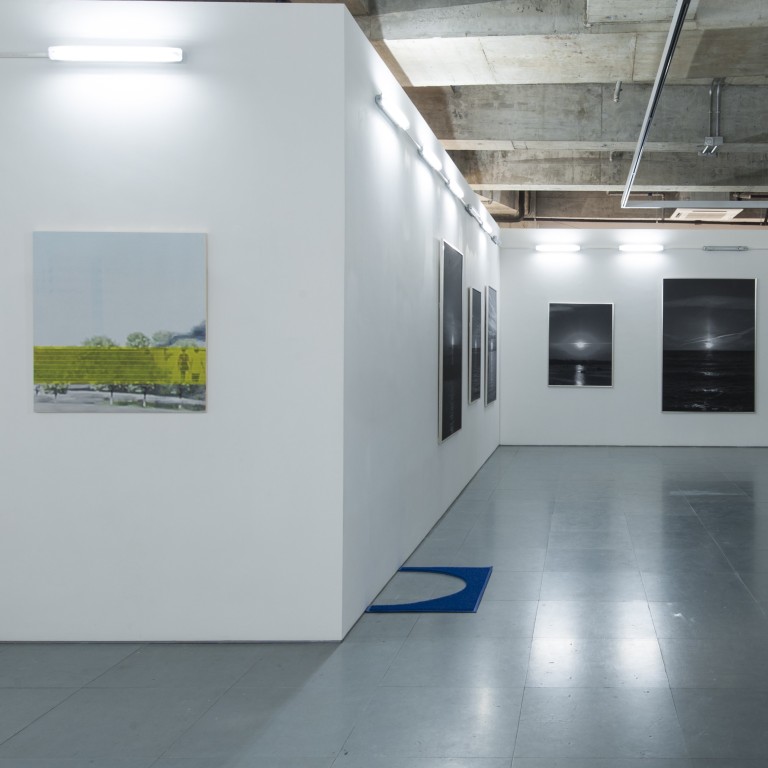
Emptiness in place of substance: Hong Kong express rail link in artist's eyes
Ko Sin-tung says her artworks on theme of costly railway to Guangzhou are a personal, not a political, response to the project
The title of Ko Sin-tung’s new solo exhibition is “Underground Construction: Failed” and it chimes with how many people feel about the Hong Kong-Guangzhou express rail link, the inspiration for the young conceptual artist’s new works.
Speaking ahead of the exhibition at the Edouard Malingue Gallery in Central, Ko says she has taken a personal approach to deconstructing the myths behind construction of the railway.
The works refer to the emotional impact the issues thrown up by the MTR project have had on her, rather than directly acknowledging the growing litany of facts and figures that has forced even the government to acknowledge that the HK$85.3 billion undertaking is an utter shambles.
The exhibition is made up of five parts. First, visitors enter the gallery by stepping on a doormat resembling the outline of a tunnel, with the middle section cut out. Like the rail project, there is emptiness where there ought to be substance.

Next, three panels show what Hong Kong has been promised – computer-generated, idealised scenes of the completed West Kowloon terminal that Ko photographed outside one of the construction sites.
Further into the tunnel-like space sit a cluster of monitors showing a reworking of her 2014 video Steady Ground. The camera captures random objects sitting at an angle on the street, and then the screen rotates, making them upright but everything else wonky.
On the opposite side is a row of large, black-and-white reproductions of internet photos capturing the sun rising above the sea. Entitled The Sun is Not Here, these are doctored images – she has removed the original colours and drawn a large “X” over each of them. The central image of the sun, set against the darkened sky and sea, may resemble the light at the end of a tunnel but her digital manipulations negate any sense of the hope and anticipation that dawn usually brings.
Finally, a large projection screen shows an 11-minute video of a pair of hands (hers) in work gloves casually dropping 24 fluorescent lights, one by one, onto the gallery floor. In the end, 10 of them broke, and these were installed together with the surviving ones around the room, giving feeble illumination to the exhibition.
On the whole, there is a pervading sense of frustration and gloom.
“I travel by bus from my studio in Fo Tan to Jordan regularly and the route takes me right past the construction site near Austin Station. It is immense, but the progress is very slow. Like everyone else in Hong Kong, I am aware of the news flow regarding the delays, but the driving force behind this exhibition is how changes in the city affect the personal. What I see from the bus puts pressure on me and affects my view of Hong Kong’s future,” she says.
The government is abusing popular imagination. It makes something look nice on the surface – in this case, the railway link – and tries to convince everyone it is good for Hong Kong
She has never been convinced of the rail project’s worth. She sees it mainly as a political move to assimilate Hong Kong into China. “The government wouldn’t ever say it. It pretends it is all because of the economy,” she says.
The softly spoken 28-year-old says she is not a political artist. In fact, she abhors such a label, believing that her work as an artist has always been about her inner thoughts rather than making direct political and social commentaries. But she admits it is impossible to draw a clear line sometimes, especially given her strong feelings about social issues. Earlier this year, she participated in a group exhibition on the theme of light in the same gallery. Her installation, called Collecting Light, was a comment on how Hong Kong residents are deprived of as basic a human right as the right to light.
“The government is abusing popular imagination. It makes something look nice on the surface – in this case, the railway link – and tries to convince everyone it is good for Hong Kong,” she says. “Everyone wants society to get better, of course. Nobody will argue against a project that is supposed to make life better. But in reality, the government is giving us something that’s not good at all.”
Edouard Malingue Gallery, 6/F, 33 Des Voeux Road Central, Hong Kong. October 8 to November 26. Inquiries: 2810 0317

